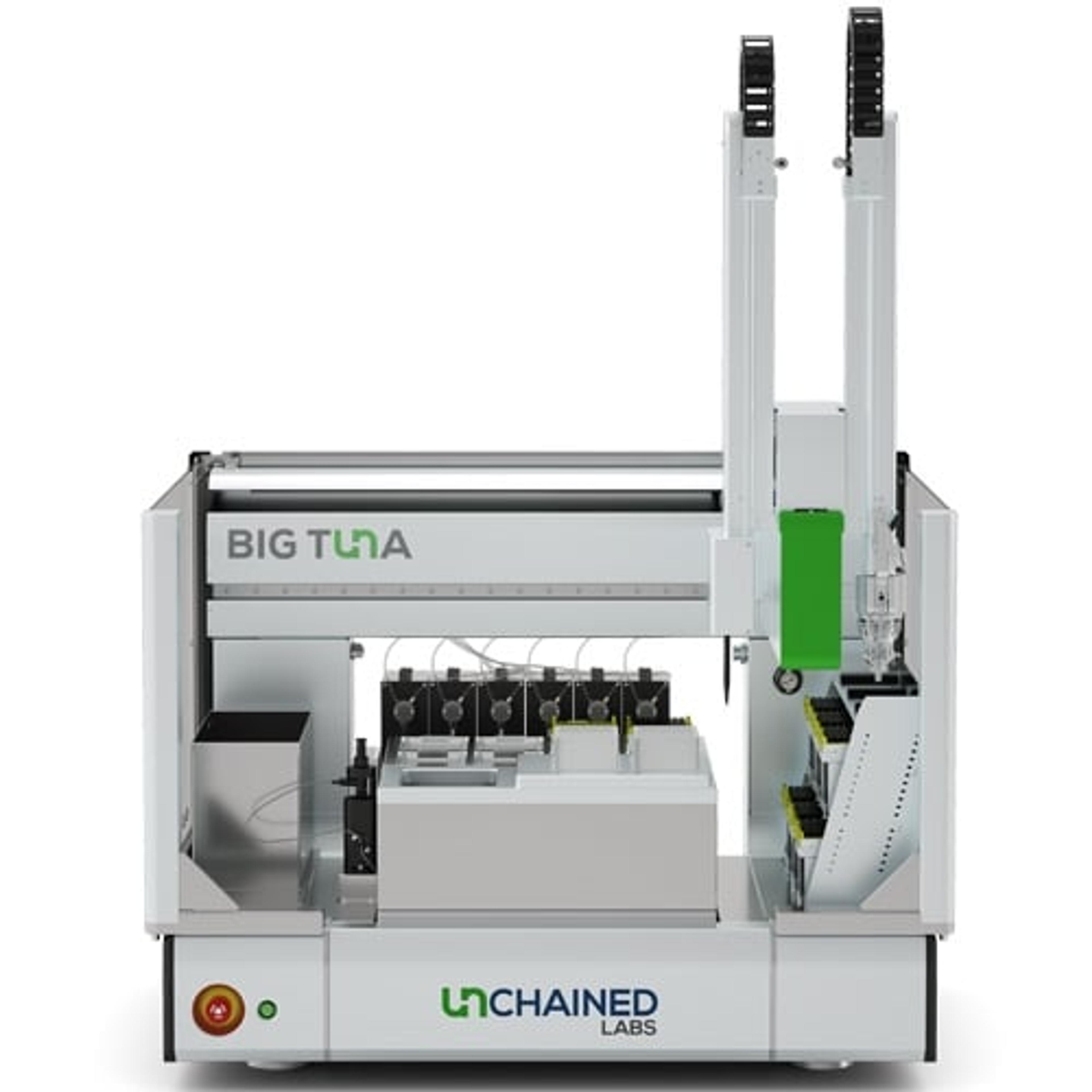Get the full scoop on your ADC from microliters
Watch this on-demand webinar to learn how to obtain data from mAbs and their conjugates using tools from Unchained Labs
25 Apr 2023

Dr. Andre Mueller, Marketing Manager for biologics solutions at Unchained Labs
In this free on-demand SelectScience® webinar, Dr. Andre Mueller, Marketing Manager for biologics solutions at Unchained Labs explores concentration, labeling, stability, and viscosity data from a monoclonal antibody (mAb) and its conjugate. You will learn how to combine multiple measurements into one experiment and how to get your data fast.
Dr. Mueller also shares innovative solutions from Unchained Labs that only require a few microliters of sample:
- Stunner quantifies proteins and labeling efficiency, plus, it gauges sample quality by assessing aggregates.
- Uncle monitors the stability of the biologic and is ideal when testing formulations, both in quick thermal ramps and in long-term isothermal tests.
- Honeybun provides viscosity data with small volumes in no time.
Key learning objectives
- Learn how to determine multiple critical proteins and ADC parameters fast, requiring only small volumes
- Discover how to quantitate protein concentration and labeling efficiency of an ADC
- Explore how to assess conformational and colloidal stability in thermal ramps and long-term experiments
- Understand how to measure protein formulation viscosity fast, with only microliters of sample
Read on for highlights from the live Q&A session, or watch the webinar on demand, at a time that suits you.
Can Uncle measure the melting temperature of oligonucleotides?
AM: Uncle is able to measure fluorescence if the analyte is excitable at 266 nm or at 473 nm. Since oligos would absorb around 260, if the 266 excitation laser is appropriate, we should be able to follow the fluorescence emission of the oligo in the temperature gradient. If you were to use a reported dye that works with 266 or most likely with 473, that should also work. So, in principle, Uncle can be used to monitor the melting of oligos.
What are the volumes needed in the individual instruments mentioned today?
AM: Stunner has a throughput of 96 samples in an SPS plate with 2 µL of each sample. Then for our buffer exchange, Unagi, we can run up to eight samples and we can go down to a volume of 0.5 mL, so, 8 mL to 0.5 for buffer exchange. If you need to go to smaller volumes of your end product, we have a second buffer exchange solution, which we call the Big Tuna that can go down to lower volumes than 0.5. For the viscometer, Honeybun, we have a volume requirement in default mode of 35 µL. We have a low volume mode as well that can handle 15 µL of sample. And in both cases, not all the sample is going to be pushed into the channel, so that can be recovered as well. Throughput wise, Honeybun can take up to 10 samples at a time. And then Uncle, our stability platform has a throughput between 1–48 samples, and it needs 9 µL per sample.
What is needed to run these instruments?
AM: You need a computer, but we do provide the computers with the software installed with the instrument, so instrument, computer, and software. Our software licenses usually allow up to five installations, so you could run it in the instrument computer itself, and then you can also analyze on your own laptop if you choose. You would then need the consumable, which differs for each instrument; the Stunner plate for Stunner, Bun for Honeybun, Uni for Uncle, and Una for Unagi. Our consumables are disposable, which is really good for multi-user facilities and to prevent cross-contamination, meaning samples don’t come into contact with the instrument other than in the consumable, which is an exchangeable consumable.
Can these tools only be used for proteins?
AM: They can be used for proteins and for other analytes as well, especially when it comes to viral vectors. Stunner can provide the titer for AAV and adenovirus and can also determine the full/empty ratios. Furthermore, Uncle can be used to assess the stability of an AAV through analyzing how stable the capsid shell of the AAV is and at what temperature it would lose its payload. The full spectrum fluorescence recorded in Uncle gives access to using reported dyes like SYBR™ Gold which can be used to look at the ejection of payload from the capsid. We can also work with nanoparticles, currently we have pilot data about LNP stability that we've measured in Uncle as well as looking at their sizes and size distributions in Stunner.
You can watch the full webinar here>>
SelectScience runs 10+ webinars a month across various scientific topics, discover more of our upcoming webinars>>



